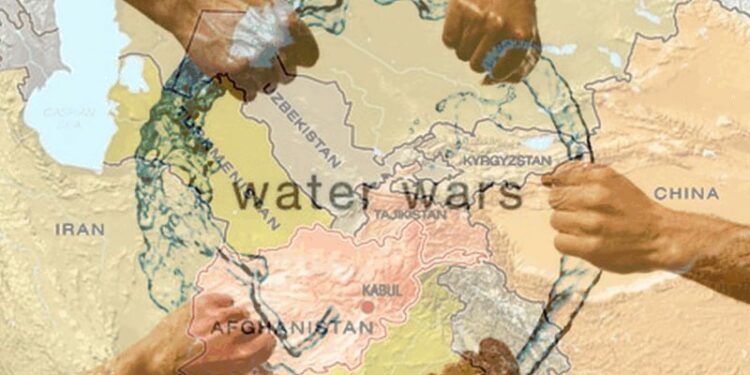In Central Asia, the already complicated issue of transboundary waters has become aggravated again. Afghanistan is actively implementing a project to build a giant Koshtepa canal in Balkh province on the border with Turkmenistan. The start of its construction was announced a year ago, AN Podrobno.uz reports.
The length of the new canal should be 285 km, width – 100 meters, depth – 8.5 meters. The canal originates from the Amu Darya in the Kaldar district of the Balkh province. The water for the canal will be taken from the same river. The capacity of the channel will be 650 cubic meters. meters per second.
The project is implemented by the National Development Company, construction is carried out at the expense of public funds. The estimated cost of the project is about $684 million. According to the plan of the developers, the canal will irrigate the lands of the provinces of Balkh, Jowzjan and Faryab and provide jobs for about 250 thousand people. The Taliban believe that the project will help water dry regions, which will give impetus to the development of agriculture. Now more than 6,000 people have been involved in the construction of the canal.
At the end of November 2022, the length of the completed section was about forty kilometers. Completion of the project is scheduled for 2028.
Experts fear that when the Koshtepa canal is put into operation, the situation with the watershed in the region will deteriorate sharply. Downstream Uzbekistan and Turkmenistan may be the hardest hit. Countries could lose up to 15% of irrigation water from the region’s main river.
It should be noted that since June last year, the filling of the Amudarya basin has fallen to 65–85% and has remained below the norm so far. Last year’s water savings from Tashkent, Dushanbe and Ashgabat did not give the desired effect.
The authorities of Kabul are not going to limit themselves to the construction of the Koshtepa canal. Afghanistan plans to build the Dasht-i-Dzhun hydroelectric complex, which can accumulate most of the summer flow of the Pyanj River. Thus, the Taliban are going to take the lion’s share of the water from the northern transboundary rivers.
The implementation of these two projects, according to experts, may entail not only economic and social problems in Uzbekistan and Turkmenistan, but also an environmental disaster throughout Central Asia.
The fact is that the Amu Darya is the main source not only for the drying up Aral Sea, but also for reservoirs and canals. There is a threat that the river may not reach its mouth and the remains of the Aral at all. Protected areas with unique nature are at risk of remaining without life-giving moisture.
The complexity of the situation lies in the fact that the republics of Central Asia do not have any agreements on water sharing with Afghanistan. The Islamic Emirate has also not signed the UN Convention on the Protection and Use of Transboundary Watercourses and International Lakes.
The Interstate Coordinating Water Commission of the Central Asian countries (ICWC) notes that they have no legal mechanisms to resolve the situation. It is not yet possible to negotiate with official Kabul or admit Afghanistan to the ICWC, since the Taliban is a banned organization.
Recall that in November last year, the ICWC participants in Ashgabat approved the water withdrawal limits for each of the five countries of the region for the non-growing period 2022-2023 for the basins of the two main rivers – the Syrdarya and the Amudarya.
Under the agreement, the limit on water withdrawal from the Amudarya basin amounted to 55.4 billion cubic meters of water. Of these, Uzbekistan got the most water – 23.6 billion cubic meters and Turkmenistan – 22 billion. The next ICWC meeting will be held in Dushanbe in April this year.
On March 22, it became known that the Taliban were ready to implement the project for the construction of the Koshtepa canal. I stated this. O. Mullah Abdul Ghani Baradar, Deputy Prime Minister of the Afghan Interim Government.
In addition, Abdul Ghani Baradara noted that Afghanistan has the right to water from the Amu Darya River “in accordance with international standards and with full regard for the privileges and rights of Afghanistan.”
BLOG
Taliban Megaproject Could Leave Central Asian Region Without Water
April 7th, 2023

April 7th, 2023
Via , a report on that Taliban’s mega canal project:

This entry was posted on
Friday, April 7th, 2023 at
11:10 am and is filed under
Afghanistan, Turkmenistan, Uzbekistan. You can follow any responses to this entry through the
RSS 2.0 feed.
Both comments and pings are currently closed.
© 2025 Water Politics LLC . 'Water Politics', 'Water. Politics. Life', and 'Defining the Geopolitics of a Thirsty World' are service marks of Water Politics LLC.

